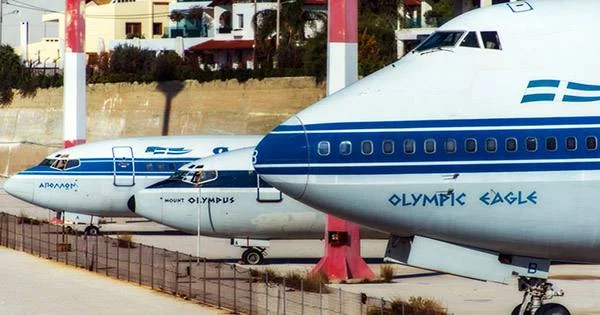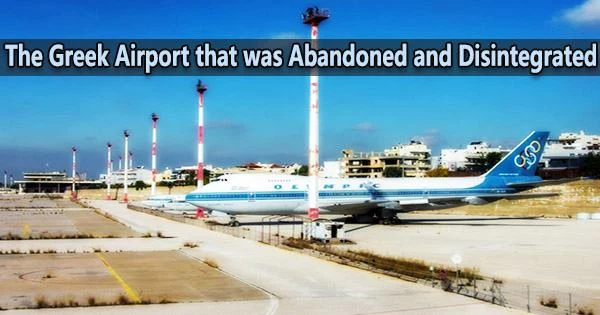In times before the epidemic, Athens International Airport handled 20 million travelers annually, and for the majority of the twenty-first century, it has served as the international entry point to Greece’s riches.
The Eleftherios Venizelos hub’s arrival halls may finally come back to life, officials hope, later in 2021. Yet, a few kilometers to the west, another airport will remain eerily quiet, as it has for much of the last 20 years.
Hellenikon, which means “the Greek” and is situated on a site about three times the size of Monaco, was for many years Athens’ sole international airport.
Although Greek aviation was still in its infancy, the former airport complex was first constructed in the late 1930s. During the World War II occupation of Greece by Axis powers, the site was used by Nazi Germany’s Luftwaffe and became a target of Allied air raids.
Major gateway
Hellenikon served as a base for Greek, American, and British soldiers after the war, but by the 1950s it had evolved into Athens’ primary commercial aviation center. After it, there was a significant amount of reconstruction work, including new control towers, terminal halls, and extended runways.
Hellenikon served as the entry point for millions of travelers coming from all over the world to discover the country’s archaeological wonders and sun-drenched beaches as Greece’s tourism sector grew quickly.
Time took its toll, however, and on March 30, 2001 after years of debates and planning Hellenikon shut its doors indefinitely to make way for a larger, more modern facility.
“In the 1990s, the airport had ended up handling well above 10 million passengers annually,” Vasilis Tsatsaragkos, president of the Olympic Airlines Workers’ Cultural Center, tells CNN.
“Hellenikon was unable to meet the country’s dynamically increasing tourism needs.”
In 2004, parts of the disused complex were transformed into venues for the Athens Olympics, hosting baseball, fencing, kayaking and other sporting events.
Yet after years of neglect due to debates about its reconstruction and Greece’s plunge into economic instability during the 2008 financial crisis, the 1,530-acre brownfield site that had previously been envisioned as a major urban park was left to deteriorate.

Stalled redevelopment
In 2014, a consortium of investors signed a €915 million ($1 billion) development deal, a key part of a post-bailout agreement between debt-saddled Greece and its international lenders.
According to the agreement, Hellenikon will be transformed into one of Europe’s biggest coastal resorts, containing upscale hotels and residences in addition to shopping centers, a park, a casino, and entertainment venues.
However, attempts to launch the project have constantly come to a halt due to political opposition and different bureaucratic barriers. Five years ago, at the height of Europe’s immigration crisis, the vast site was transformed into an improvised colony, housing thousands of refugees in appalling conditions, with a sea of tents filling its abandoned terminals and Olympic facilities.
In recent times, Greece’s government has pledged to speed up regulatory procedures so that the long- delayed redevelopment project can get off the ground. In July 2020, demolition crews started the clearing process by demolishing the first block of the several structures that need to be destroyed.
Frozen in time
Some of its listed buildings that will be preserved from demolition include the former East Terminal building, designed in the 1960s by the firm of groundbreaking Finnish-American architect Eero Saarinen in the 1960s.
Currently, a sense of emptiness permeates its dilapidated, cavernous hall at ground level. You can enter the once-bustling lounge area by going downstairs, where you will find it littered with the remains of half-ruined walls and a collapsed ceiling that reveals bungles of knotted wires hanging above.

In other places, a mess of rubbish, shattered glass, and discarded record books reveals the frightening extent of deterioration, and the sight is further accentuated by faded tourist posters and tattered maps.
Outside the crumbling structures, a small fleet of decommissioned Boeing aircraft, including an imposing 747-200 alongside a Boeing 737 and Boeing 727, sit idle on the edge of the complex.
The rusting, stripped-down passenger jets all belonged to Olympic Airways (OA), the carrier that for decades ruled Greece’s skies and became synonymous with Hellenikon.
When OA ruled the skies
Launched by business magnate Aristotle Onassis in 1957 following an agreement with Greece’s government for the exclusive use of air transport, OA swiftly expanded its fleet and helped put the country on the global tourist map.
“This was the airline that connected Greece with the whole world within 23 hours, Athens had ‘contact’ with five continents,” Tsatsaragkos says.
OA quickly became known for its second-to-none luxury cabin service, reflecting the lavish style of its Greek founder and one of the world’s wealthiest men. Its passengers notably enjoyed their meals on porcelain plates with gilded silverware and crystal glasses, while its flight attendants wore stylish costumes designed by renowned designers like Coco Chanel and Pierre Cardin.
Following the 1969 opening of the Saarinen-designed East Terminal, which served all foreign carriers, Hellenikon’s West Terminal was exclusively reserved for OA. Through its gates, a steady stream of celebrities from Elizabeth Taylor and Sophia Loren to Omar Sharif and Neil Armstrong was pictured arriving in Greece.
But in 1973, the death of Onassis’ 24-year-old son, Alexander, in the crash of a two-engined amphibian Piaggio jet shortly after take off from Hellenikon shocked Greece and the Onassis family, and ultimately led to the end of OA’s “golden age”.
On January 1, 1975, Onassis formally sold the company to the Greek state and died on March 15.
In its first 18 years, OA’s fleet had increased from 15 to 28 including the technological marvel of the time, a Boeing 747-200B Jumbo bought in 1973 for the Athens-New York route but the national carrier went on to face major financial problems in the decades that followed due to chronic mismanagement.
After changing its name to Olympic Airlines in 2003, the airline discontinued operations in 2009, several years after moving from its previous location at Hellenikon with the rest of Greece’s aviation industry.
But the memory of both the abandoned airport and OA will live on in a new museum that will be housed in an earmarked building inside the redeveloped site, according to Tsatsaragkos.
“We have collected 23,000 items documenting the history of both OA and civil aviation,” he says, adding that seven aircraft will be among the future exhibits. “We keep gathering material. This museum is our big vision.”
















